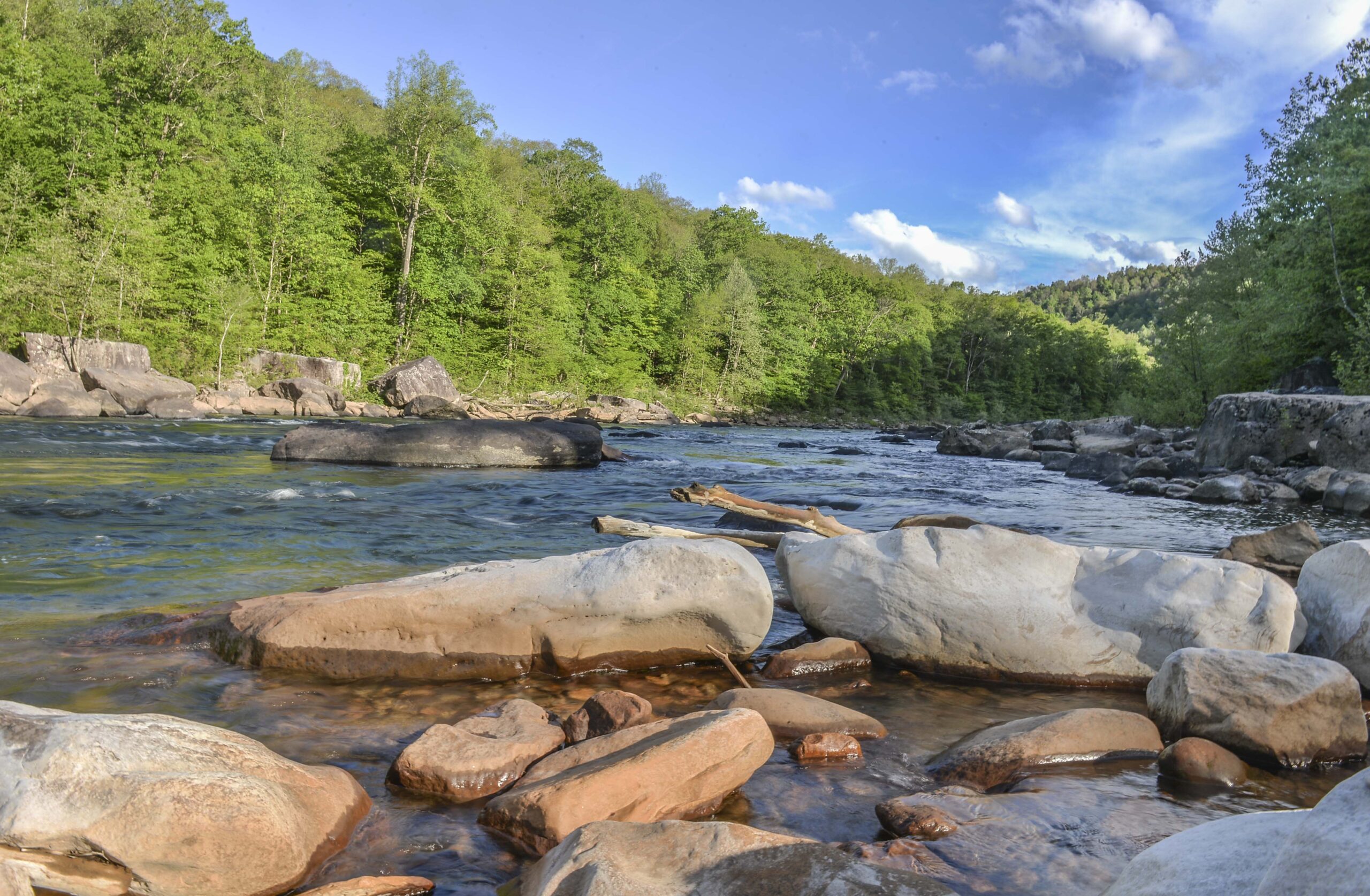Cleaning a body of water is a complicated and expensive process, but the area’s waterways show even the worst polluted rivers, lakes and creeks can be restored to productive fisheries and boost the economy.
Acid mine drainage, a legacy left by West Virginia’s once-thriving coal mining industry, is identifiable by the orange-yellow iron hydroxide in which it covers water bottoms. The high acidity is devastating to an ecosystem.
But thanks to many partnerships involving governments of all levels, nonprofits, individuals and higher education, many of the area’s waterways are starting to thrive.
Places such as Cheat Lake, Cheat River, Deckers Creek and Monongahela River are success stories in watershed restoration, said Paul Ziemkiewicz, director of West Virginia University’s Water Research Institute.
In fact, the state is a leader in the field.
“We’ve done better at that than just about anyone in the United States has here in West Virginia,” Ziemkiewicz said. “… And so that has a lot of economic benefit, as you can imagine. But the reason that happened was that we had a partnership consisting of the citizens’ watershed groups, we had the buy-in of the state and federal governments and really important buy-in from the state government DEP. And we had the technology here at the Water Research Institute at WVU. So that little alliance really made things happen here. That just doesn’t happen a lot of places.”
One innovation that came out of West Virginia was the current whole watershed approach, instead of trying to clean just the centerpiece such as Cheat River. Without cleaning Muddy Creek, the Cheat River would still be devoid of life, Ziemkiewicz said.
He said, “That was a big watershed-scale treatment project and it worked great, eliminating half of that acid load to the Cheat. Now even though the Cheat’s still getting discharges from Lick Run, Heather Run, Morgan Run, etc., farther above Albright, it’s still in good shape because it can dilute those sources. We want to get to them and clean them certainly, but the priority was to fix the Cheat and we couldn’t fix the Cheat unless we fixed Muddy Creek.”
The next innovation could finance even more treatment plants, Ziemkiewicz said. The research institute is working on a method to extract rare earths and critical elements from coal byproducts that are found in acid mine drainage.
A process has been developed to extract those elements over the past few years while cleaning water. A pilot plant should come online this summer near Mount Storm in the headwaters of the Potomac, he said.
The Cheat River and Cheat Lake are on the rise in terms of water quality and in terms of its quality as a fishery, said Owen Mulkeen, associate director of Friends of the Cheat.
“Walleye are coming up from Cheat Lake that have been stocked in Cheat Lake and are now found throughout the canyon and in Albright,” he said. “Same with muskie; a growing bass fishery in the Cheat.”
Currently, FOC is working on improving the recreational aspect of the Cheat, which is popular with whitewater rafters in the lower section and its scenic flatwater trail in the upper section. Mulkeen is the lead on a project to open a trailhead on Route 72, near a 400-foot trestle bridge that goes across the Cheat below Lick Run.
FOC is also working on removing the Albright Dam, formerly used in the Albright Power Station, and was recently awarded $1 million to that end by the federal government as part of a fish passage effort.
Deckers Creek is also largely a clean creek, Executive Director Brian Hurley said. He said there are pictures as recently as the early 2000s where the rocks are red and the creek is lifeless. There are some issues with tributaries, but Hurley said he would still go swimming in the upper section.
“However, these days lots of people go fishing there. The water quality tests consistently well, that includes water chemistry, as well as that bacteria,” Hurley said. “So those are pretty significant improvements.”
The creek is still suffering from acid mine drainage from the old Richard Mine site in Richard to the Monongahela, about five miles away. The state DEP is working on a filtration plant for the Richard Mine Portal.
FODC can monitor water quality 24/7 now and as scientists will tell you, you can never have enough data. For example, how do storms or flow level change water quality?
FODC is also working to improve fish habitat and flow in the Marilla Park section of the creek.
Both that project and the Richard plant will be game changers, Hurley said.
TWEET @DominionPostWV




